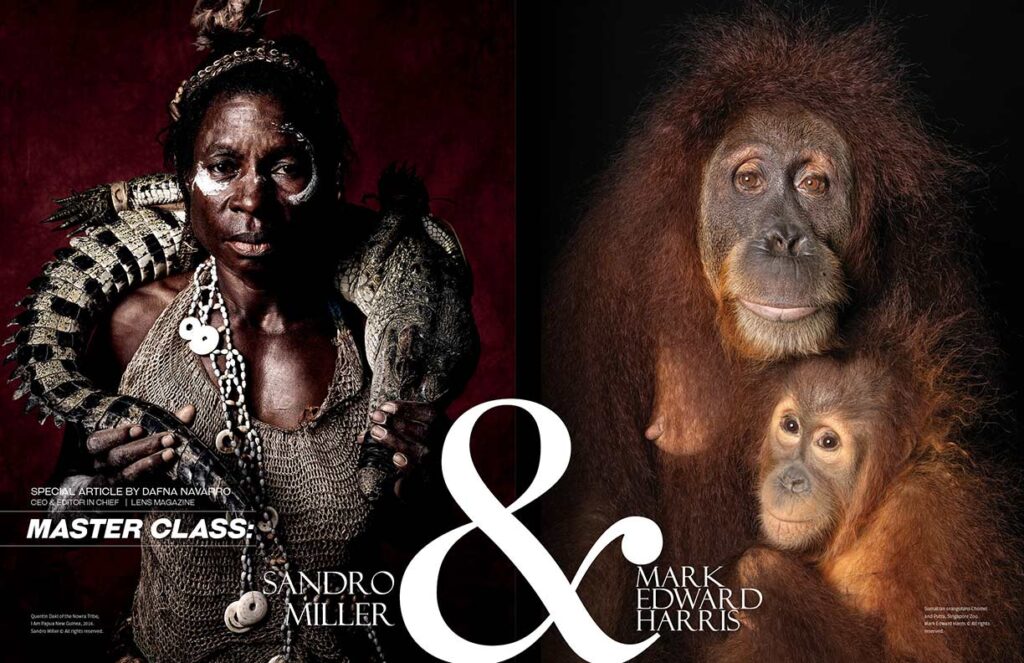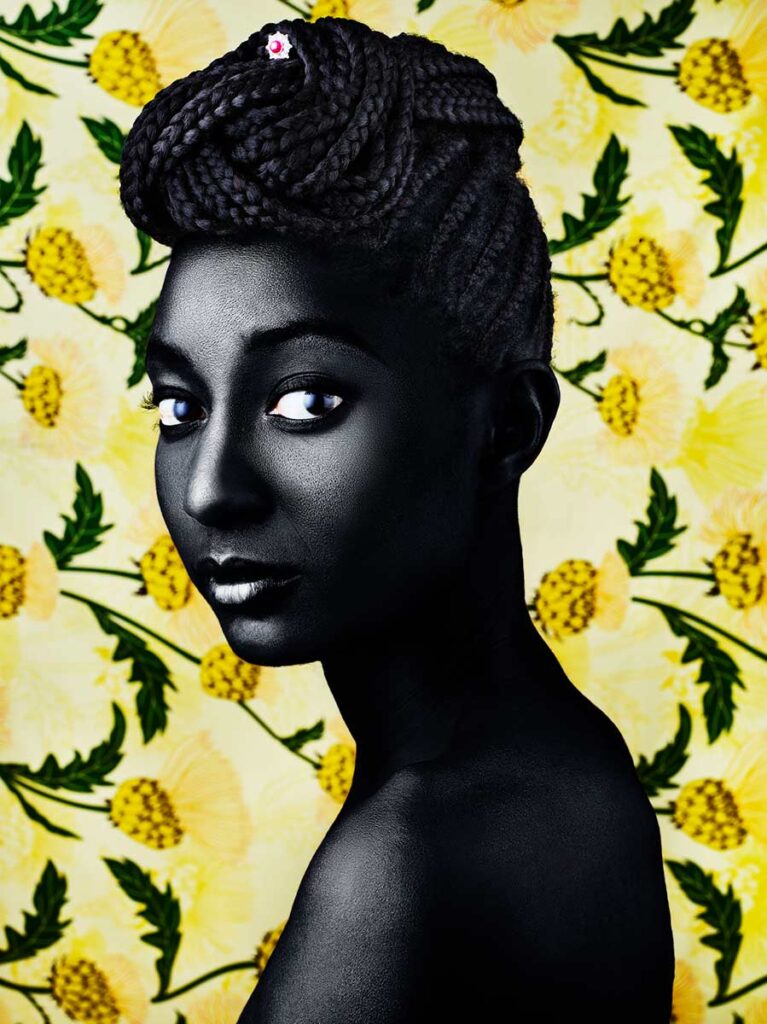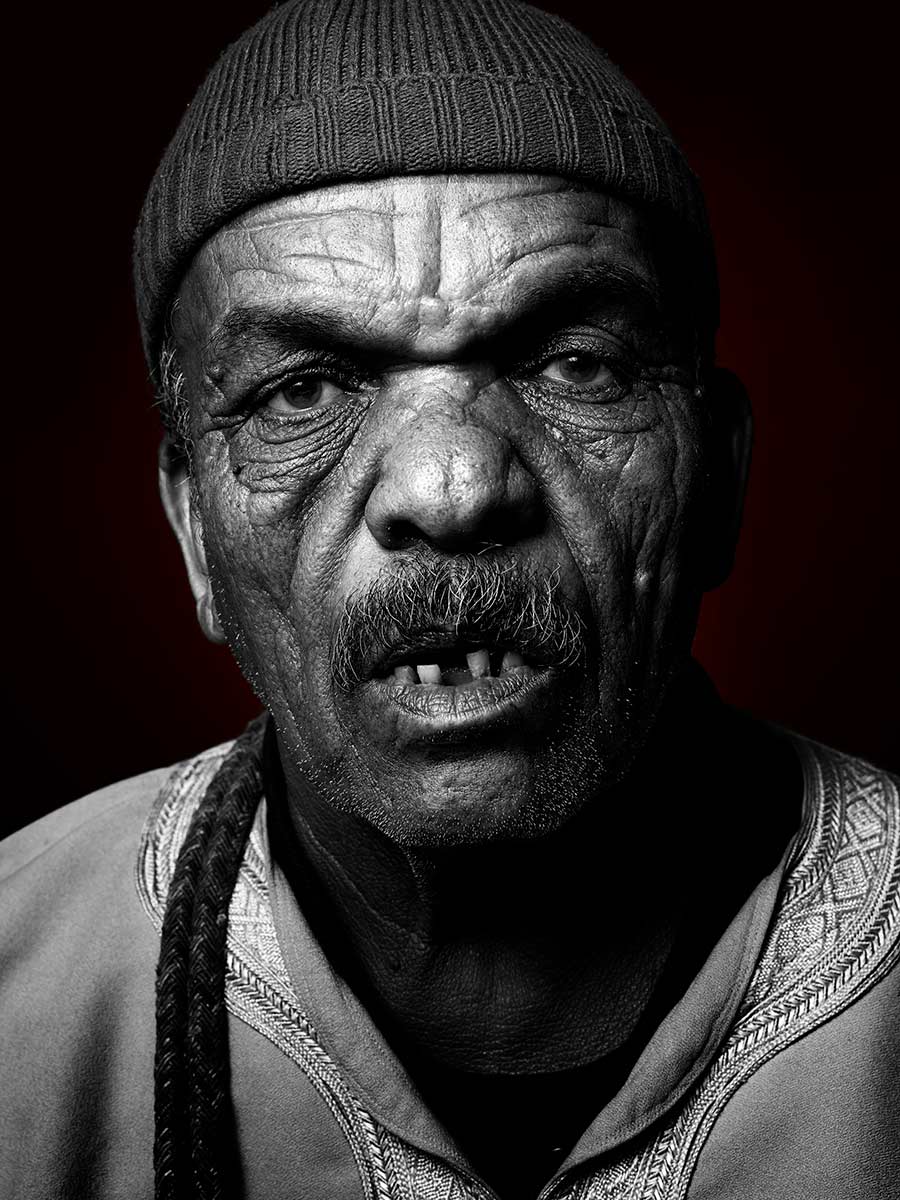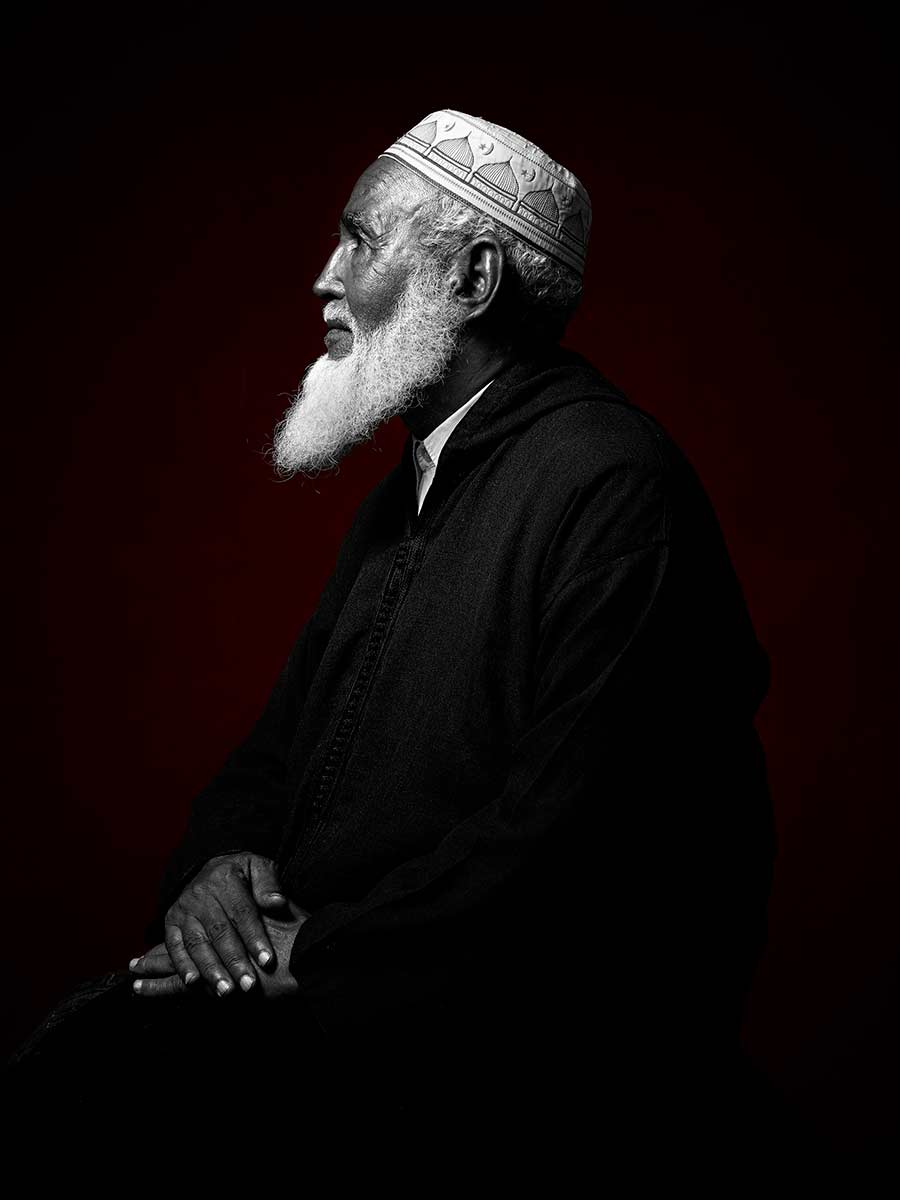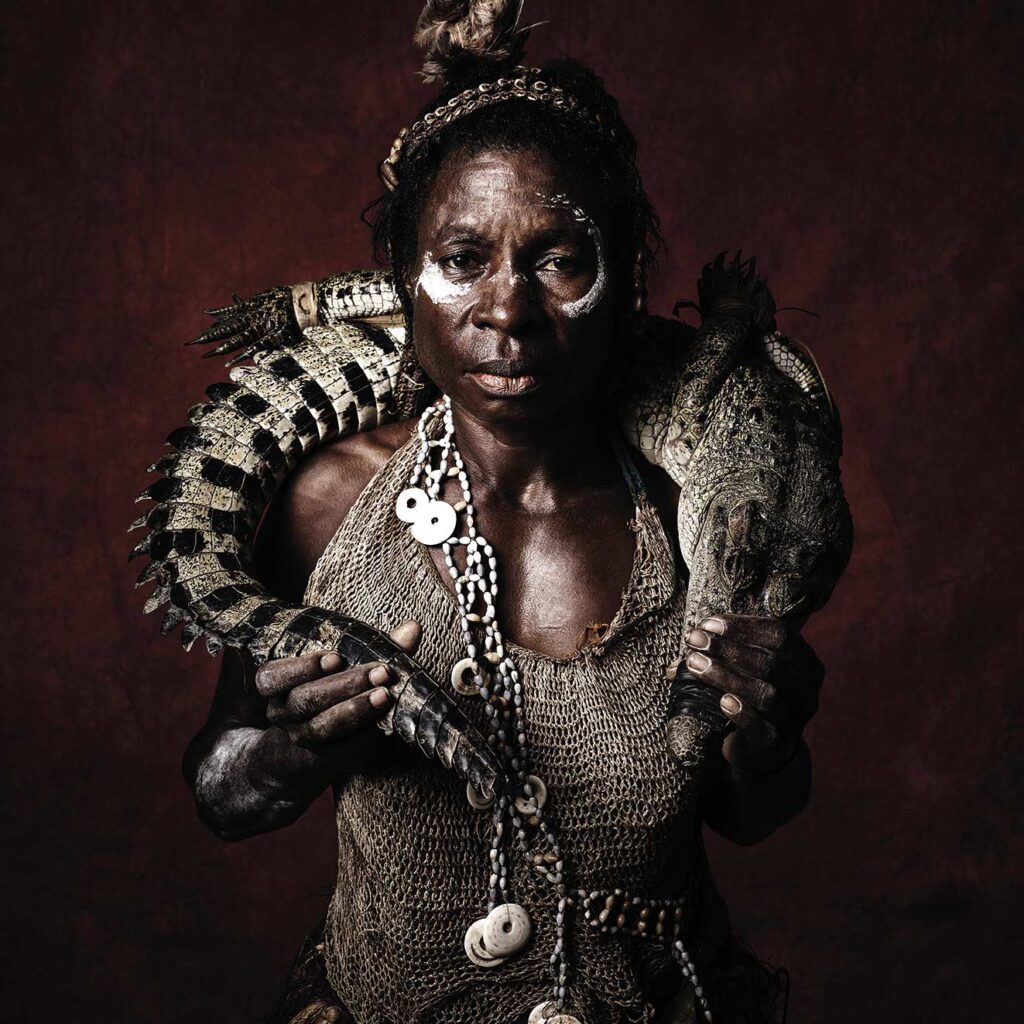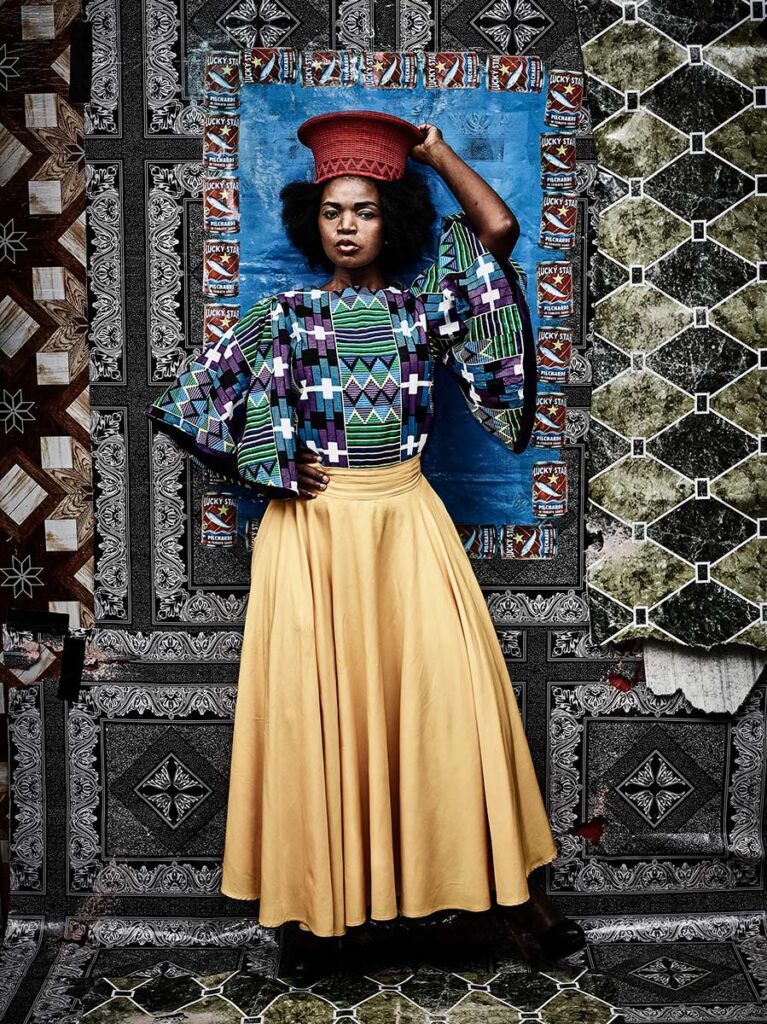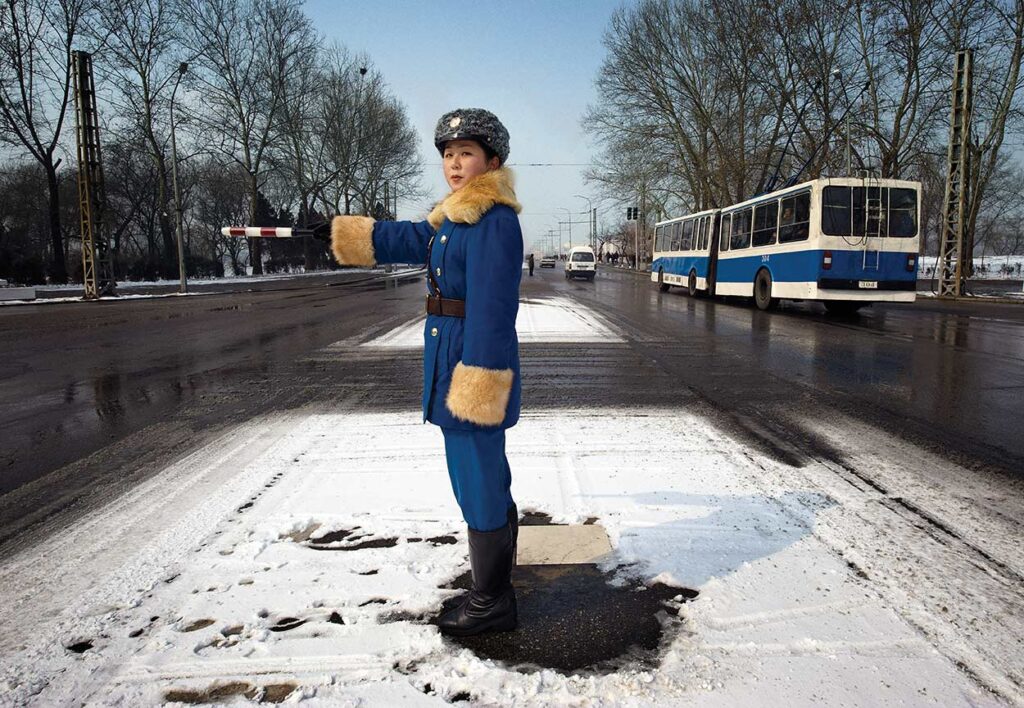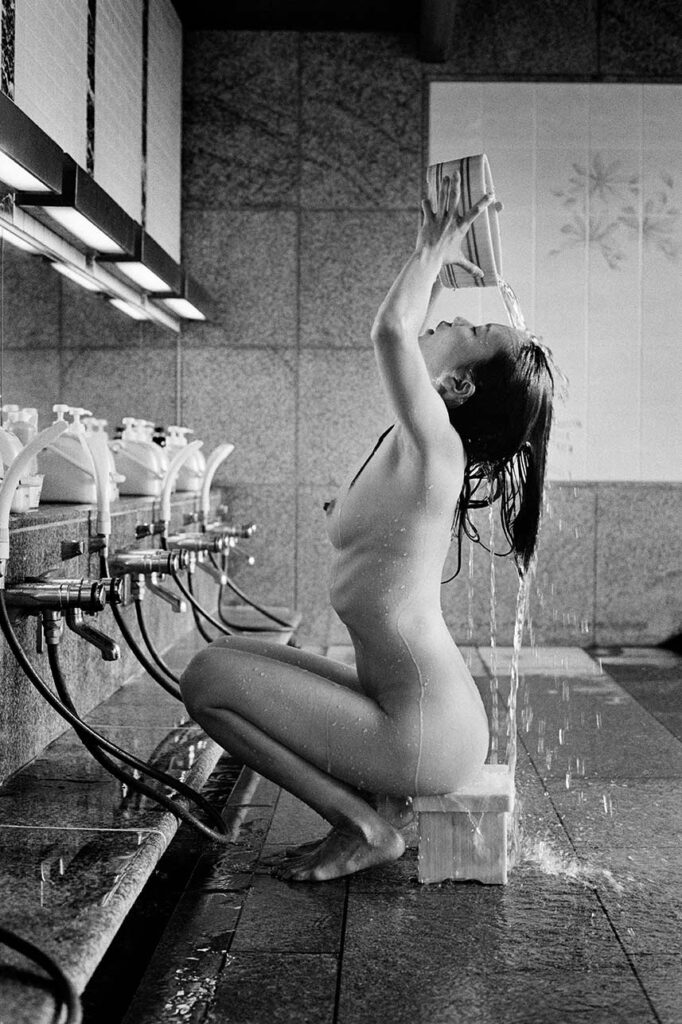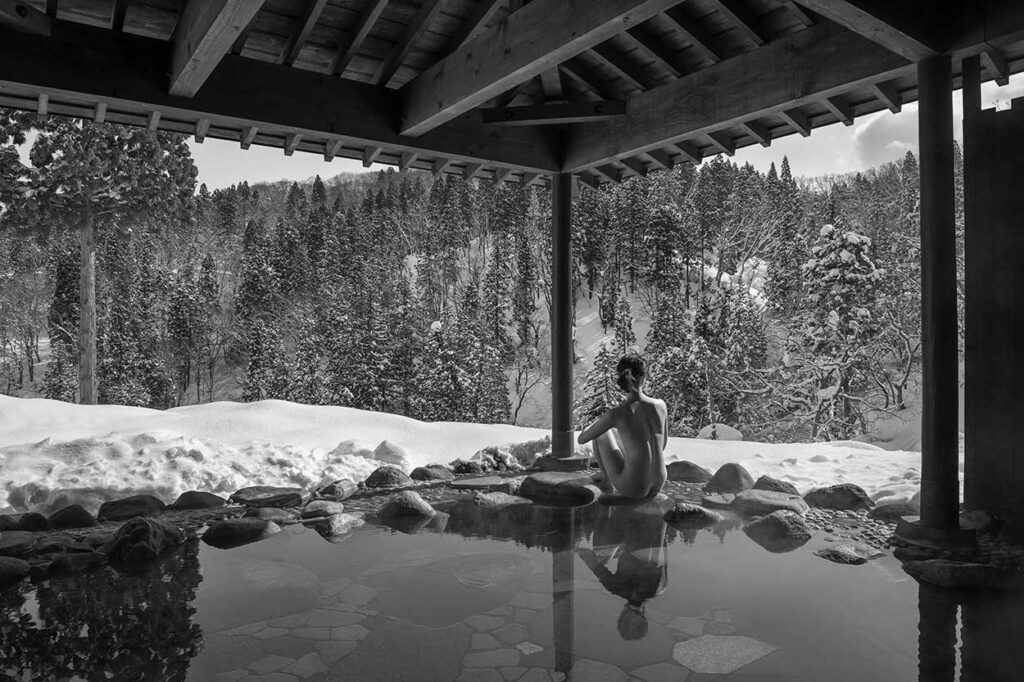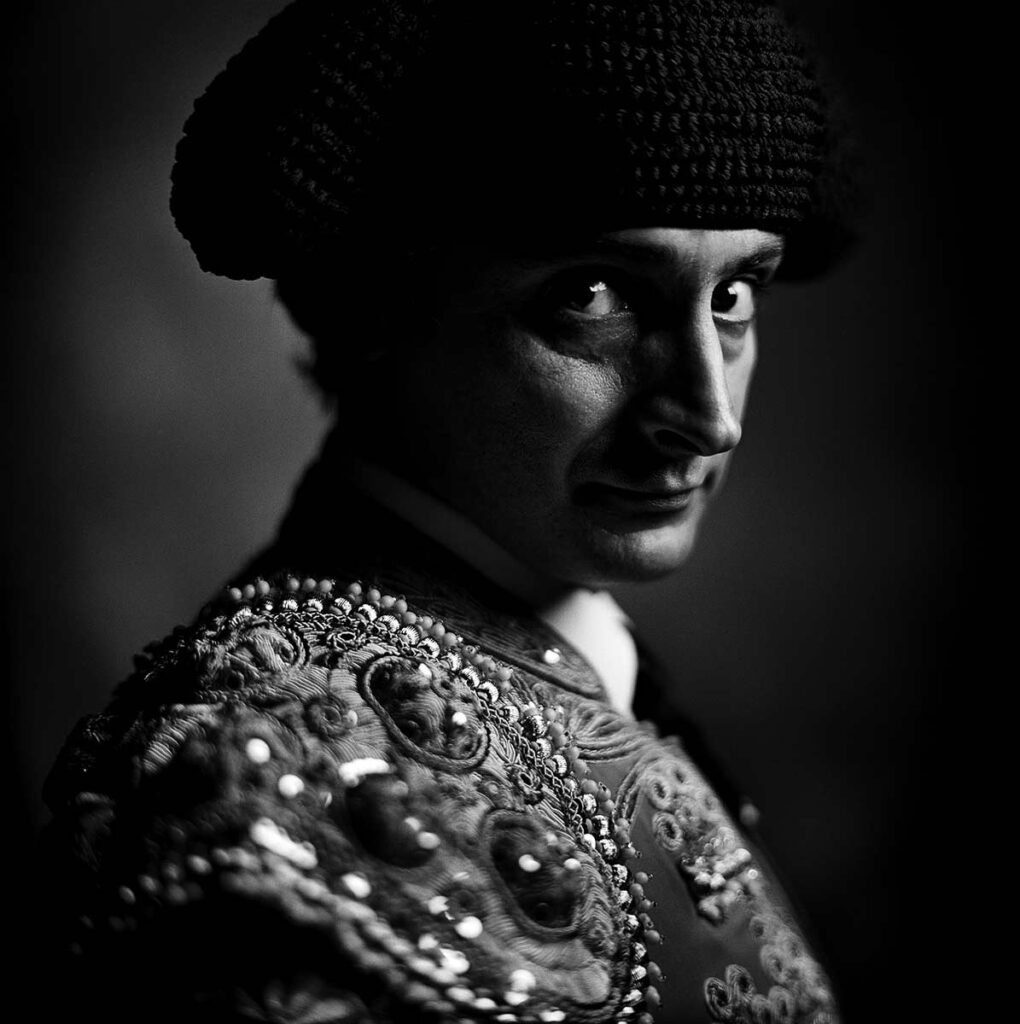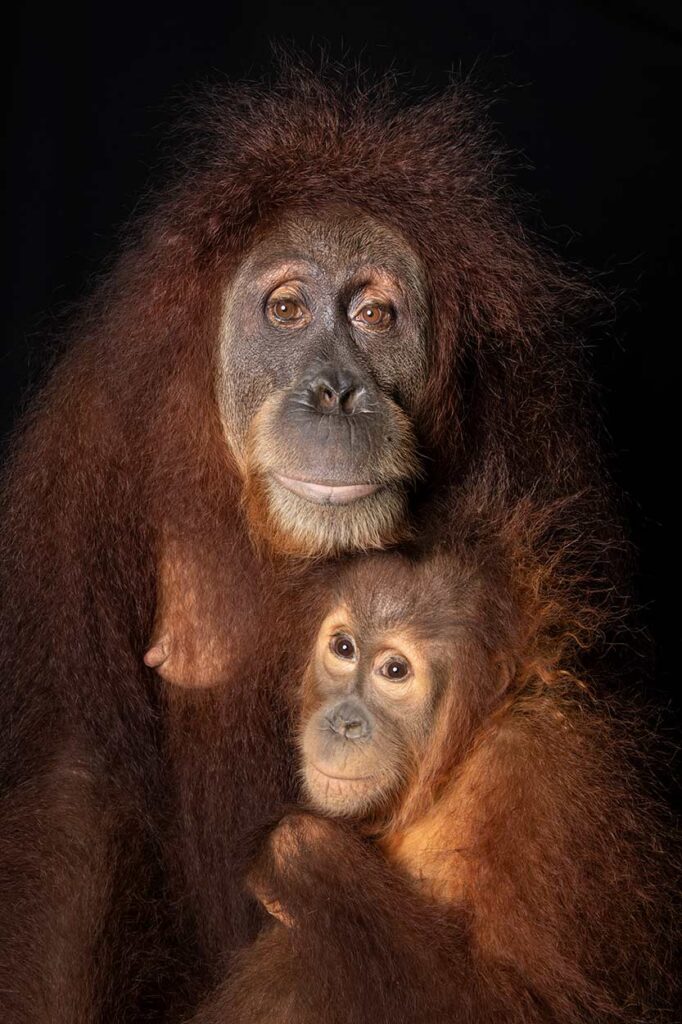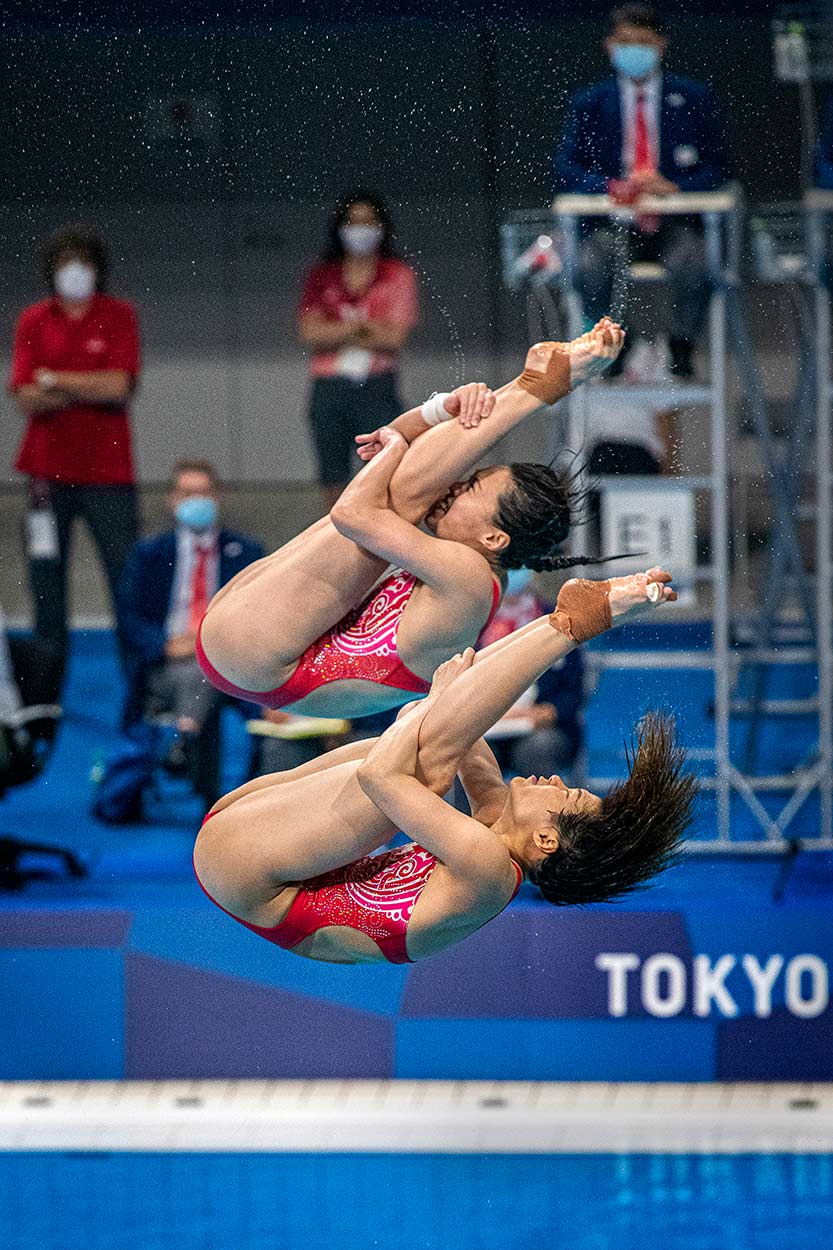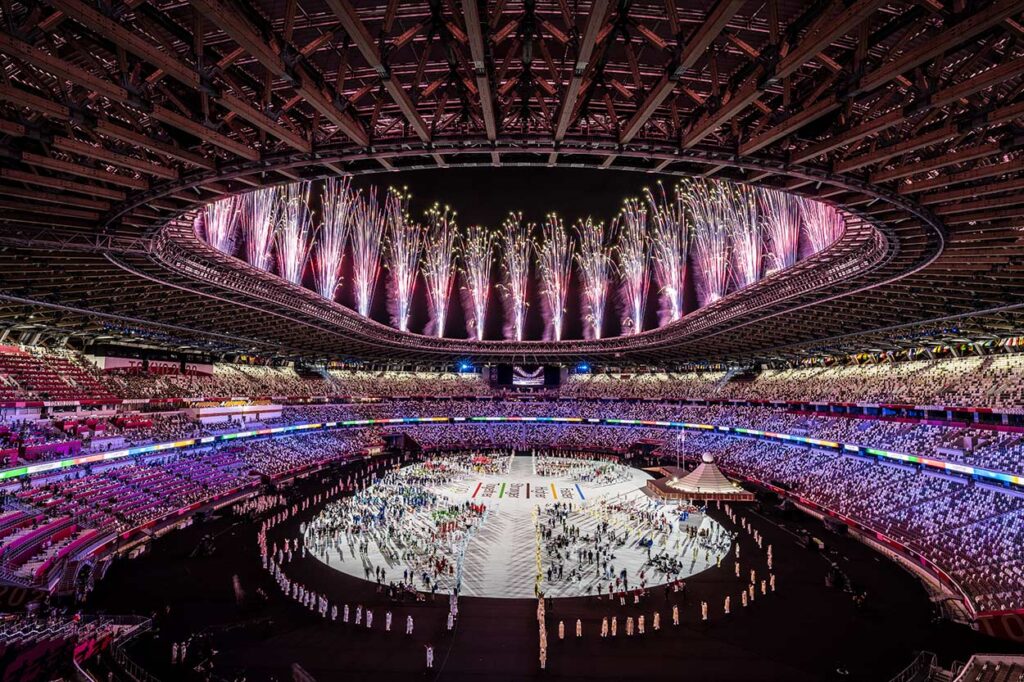Special article by Dafna Navarro, CEO & Editor-in-Chief | Lens Magazine:
MASTER CLASS: Sandro Miller & Mark Edward Harris
If there were a photographic mutual admiration society, Chicago and Mallorca-based Sandro Miller and Los Angeles and Tokyo-based Mark Edward Harris would be charter members for all the kind words they have to say about each other’s imagery and work ethics. And those who have been fortunate enough to attend one of their master classes not only extol those virtues in the award-winning photographers but add their appreciation for the skill in which the two are able to impart their knowledge to those with receptive ears and eyes. They attest to the fact that they emerge more dynamic, focused photographers armed with the technical and mental skills to create more powerful and meaningful images.
Miller and Harris met in Hyderabad while guest speakers at the Indian Photo Festival in 2018 and saw how their individual humanistic photography and teaching styles complemented each other. Over naan and curry, they discussed teaching team-ups scheduled between commercial and editorial assignments.
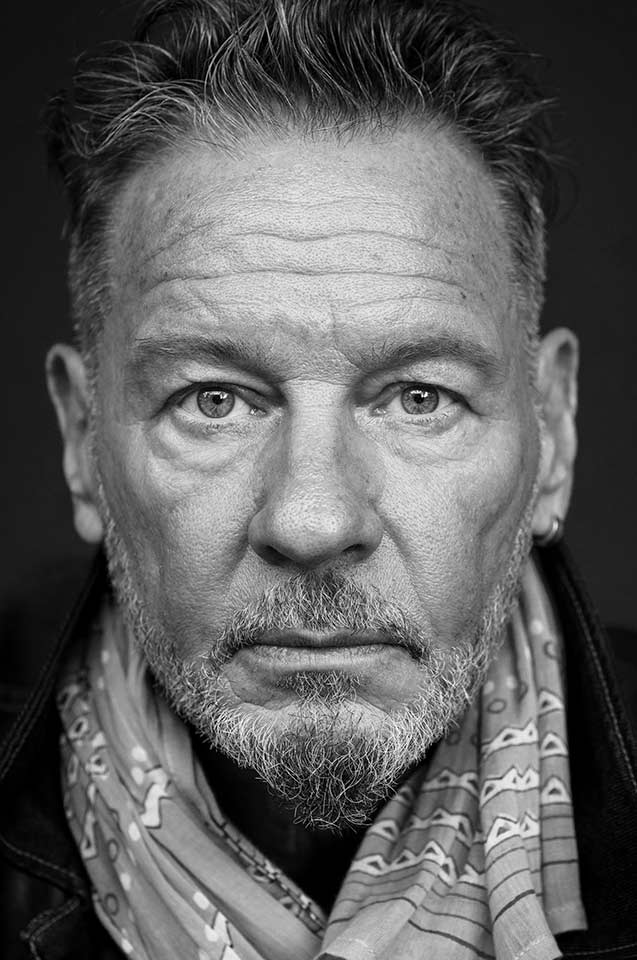
Sandro Miller. A portrait by Mark Edward Harris © All rights reserved. 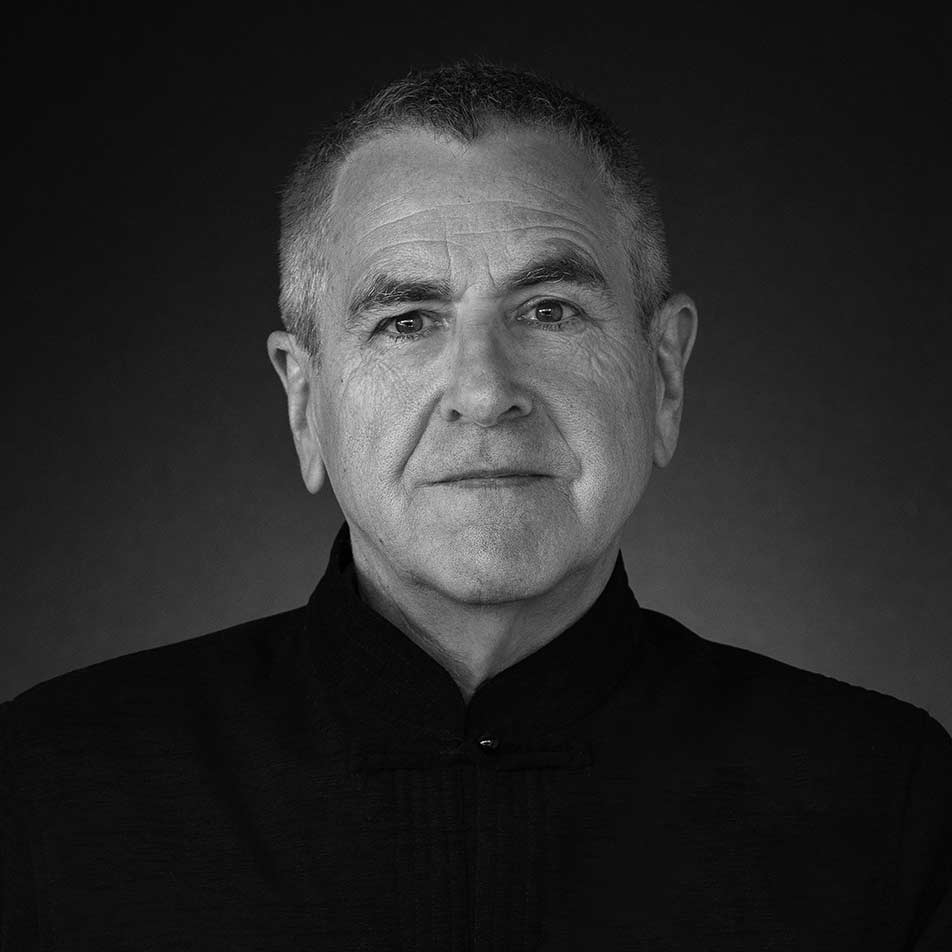
Mark Edward Harris. Self Portrait. © All rights reserved.
Right: Mark Edward Harris. Self Portrait. © All rights reserved.
Sold-out workshops in Shanghai and Alaska followed with Chicago scheduled for the end of September 2023, India in February and March 2024, Dubai in 2025, and more to be announced, including in Miller’s new state-of-the-art studio in Mallorca.
“I begin by taking light away and sculpting the light using gobos and cutters, things that will help me shape the light on the background and shape the light on a person’s face and body to get just the shadows and curvature of the light that I’m looking for. That light can change so much in just one inch on a person’s face. I know how to read that light.”
-Sadndeo Miller
Sandro Miller © All rights reserved.
We asked Miller the reasons for his increasing focus on giving back through workshops. “After a wonderful 45-year career that is still in full throttle, you gain a tremendous amount of knowledge about your craft and the mindset it takes to run a business in photography. In the normal cycle of life, once you have achieved this knowledge and this success, we are meant to give back. I have felt more joy and a sense of accomplishment through teaching and mentorship than I have from all the success and fame that has come along with having such an amazing career. I often feel after a workshop that I have changed people’s lives for the better. This feeling has been reinforced by the letters and emails I receive from students describing how the workshops have made them better photographers with a greater understanding of light, composition, and capturing the decisive moment.”
“In the past five years, I have had the wonderful opportunity to teach workshops with the master photographer Mark Edward Harris. Together Mark and I bring such different approaches to our lighting and process of working. We have taught students from 18 to 90 years old who range in skill level from professionals making a great living in the field to people that just want to learn and take this wonderful medium that is their hobby to the next level. Mark and I both give everything we have; every bit of knowledge that we hold is turned over to our students.
It is a time for us to give and to watch people grow right in front of us. Learning and being open to being taught is the only way to improve our lives and knowledge of a subject. Being able to hold the knowledge that people want is a gift, and for Mark and I giving this gift has become a big part of our missions in life. We have taught the very wealthy, and we have taught the underprivileged. We teach to bring people together, people with the same love for photography that Mark and I carry.
When we find ourselves in a class situation, whether it be in a studio or on the streets, and see and feel the joy we are giving to people that are incredibly hungry for knowledge, we can’t help but feel good knowing we are part of something that is helping people grow in their lives.”
“Being able to hold the knowledge that people want is a gift, and for Mark and I, giving this gift has become a big part of our missions in life. We teach to bring people together, people with the same love for photography that Mark and I carry.”
– Sadndeo Miller
While Miller and Harris’s styles might look very different, their approach to their subjects for portrait sessions, whether they be of the “eyes are the window to the soul” type or more environmental, is similar. They operate like a dentist works with a patient, their eyes riveted on their subjects and their words directorial and assuring. The photo sessions are meant to be opportunities to penetrate deep into the soul without extraneous banter deemed contrary to the goal. Both Harris and Miller are sculptors, using light as a chisel to bring out the essence of the sitters before their lenses. Miller, in particular, molds his subjects with light like Rodin shaped his with clay. He adjusts his sitter’s head position fractions of an inch to pick up a catchlight in the eye or to have it disappear into a dramatic shadow.
Miller explains, “I begin by taking light away and sculpting the light using gobos and cutters, things that will help me shape the light on the background and shape the light on a person’s face and body to get just the shadows and curvature of the light that I’m looking for. That light can change so much in just one inch on a person’s face. I know how to read that light. I know how to read the curves on the face, the nose, and how deep the eyes are. I want to create the most beautiful, buttery light, so I’m often working with silks, often multiple silks, in front of a six-foot parabolic, depending on the tone and texture of the skin of the person I’m photographing.”
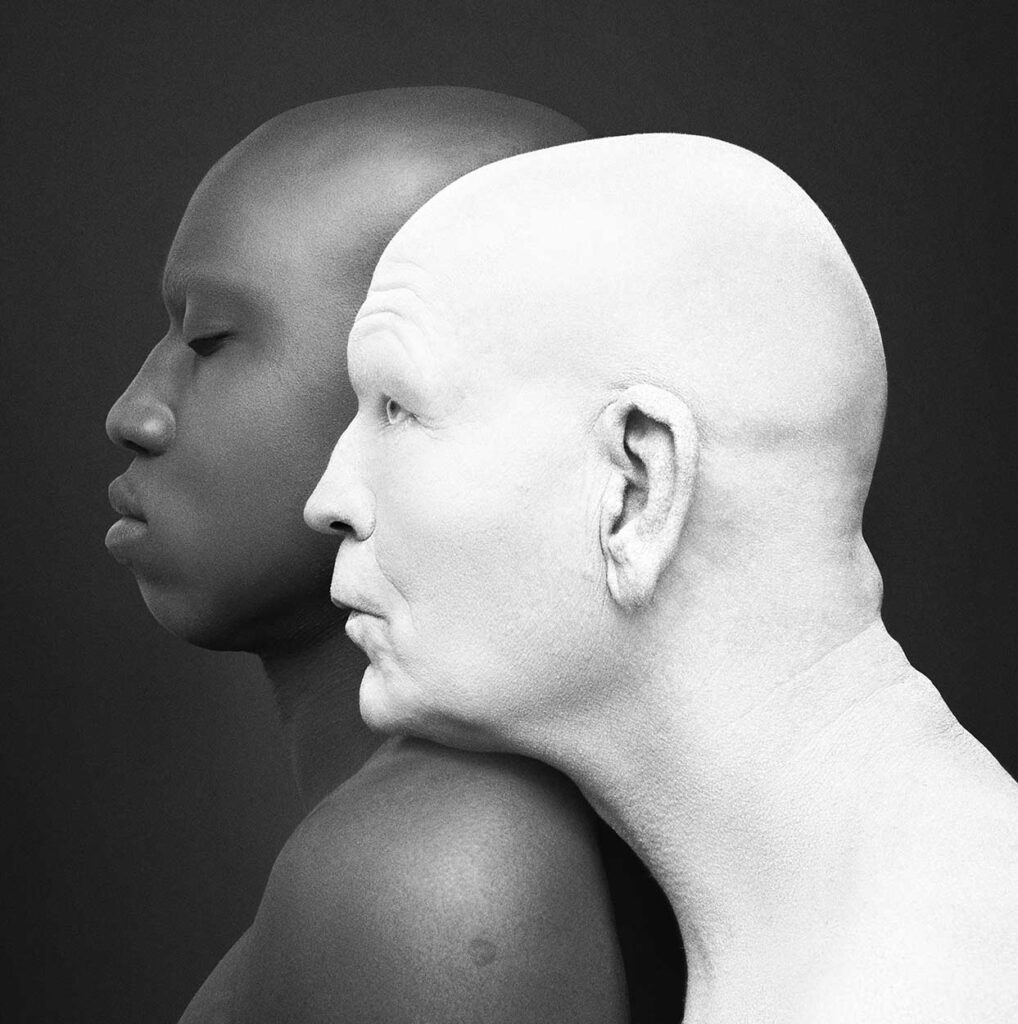
Sandro Miller © All rights reserved.
Harris gives further insights into what makes Miller one of the greatest portraitists in the history of the medium, “Sandro’s bedside manner with his subjects is amazing. He is able to put everyone at ease, no matter what language or cultural barriers might be between them. When you’re on the other side of the lens from Sandro, you know you are being photographed by a master who will be able to capture the essence of who you are. For studio portraits, he does this most often with Profoto lights and a variety of light modifiers. But he keeps his lighting to a minimum; it’s more about bending the light to fit the subject with cards, cinefoil, and so on. He also tends to work with shorter lenses to keep the intimacy with the person on the other side of his lens.
In our workshops, Sandro usually works with strobes for the students while I teach, using constant sources such as StellaPro CLx10 lights to expose our students to various lighting options. While I also use strobes in my own work, we want to give students various “brushes” to decide how they best want to create their own art.”
For Miller’s Willem Defoe shoot for New York Magazine, he was tasked with creating four wardrobe changes on four sets in a New York hotel ballroom, all within a 30-minute window. How was he able to create rapport in such a short time? “Many photographers don’t understand the importance of the time from when the subject of a portrait walks into your studio till the time they walk on your set can help you capture something so much deeper and more intriguing if you spend that time getting to know your subject. The first five minutes are spent just getting the subject to understand how much I care about the shoot, how much I respect them, and how much I want to do something very special with them. From there, we just roll.” Miller’s preparation, clear objectives, on-set adaptability, spontaneity, and natural talent yielded once again spectacular results from the Defoe shoot.
One of the key issues Miller and Harris often see with their workshop participants is a shyness that inhibits the creation of powerful portraiture by introducing an artificial barrier – distance – both literally and figuratively. The two work to break down this impediment.
The words of photojournalist Robert Capa are still as true today as when they were uttered more than half a century ago and can be applied to portraiture, “If your pictures aren’t good enough, you aren’t close enough.”
Miller and Harris also convey to their workshop participants that there are multiple solutions to a photographic problem, whether it be in portraiture or any other photographic genre. Harris adds the words that he credits to a National Geographic editor, “We publish pictures, not excuses.”
In other words, failure is not an option when it comes to professional assignments. It is, however, a valuable tool when it comes to learning. During review sessions, metadata is often checked to see if a shot didn’t quite work because of a technical issue.
We asked Sandro what impressed him most about Harris’s photography.
“I don’t know any photographer that can work better out of a camera bag anywhere on the planet and in so many genres.” Harris discusses his life as a freelance photographer and advises those on or considering a similar path. “The life of a freelancer is exciting but seldom easy. You must constantly think and plan ahead while living and working in the present.
“We publish pictures, not excuses.” In other words, failure is not an option when it comes to professional assignments. It is, however, a valuable tool when it comes to learning.During review sessions, metadata is often checked to see if a shot didn’t quite work because of a technical issue.”
– Mark Edward Harris
Having long-term personal projects is vital to smooth out the rough road. Magnum photographer Eve Arnold told me that’s how many of her books came about, including her monumental ‘In China” monograph. My North Korea, South Korea, Iran, Japanese hot spring, and orangutan series that all led to books and exhibitions are examples of these types of multi-year projects. Another example is the Japan tsunami and recovery project that started soon after that tragic event in 2011. There will be a large exhibition of that work in Tokyo in February 2024.
To stay mentally and physically in shape on and off the road and for personal and professional development, I study Mandarin and Japanese daily and practice Qi Gong.”
These days Harris circles the globe – 100 plus countries to date – with his Think Tank bag filled with Nikon Z8 and Z9 camera bodies and Nikkor Z 14-24mm f/2.8, Z 24-70mm f/ 2.8, 70-200mm f/2.8, and 400mm f/2.8 lenses and StellaPro CLX10 lights.
Miller discusses his use of cameras and suggests how students might regard theirs: “Over the course of my career, I have been true to three specific camera systems, Hasselblad, Nikon, and Leica. Whatever camera equipment our workshop participants use, I suggest that they use their tools as a painter uses a brush. A painter chooses a brush for a particular look it gives the paint when applied to the canvas. The size of the brush may relate to the size of the painting or the coarseness or thickness the painter may want to see in their paint on the canvas.
For a photographer like me, it is important to choose a camera system and format after my style and the look I want to give a particular project. Most likely, if I’m doing one of my studio portraits, I will bring out my Hasselblad. Since it’s wider than the 35mm format, it gives my subject more room side to side to create interesting shapes with arms, hands, and body movement. This same approach is often used for location portraits as well, whether I am using my lights or using the sunlight through scrims and silks.”
“My go-to location, lifestyle, sports fast action camera will always be my Nikons. I was a Nikon ambassador for nearly 25 years and have used just about every professional camera they ever made. Nikons are workhorses; they are great to get out there, get dirty, beat up, throw them in your bag, and get them out the next day and beat them up again. I have crawled through the mud, walked through thick jungles, waded through water up to my neck, and road across arid deserts on camels with these cameras. I have created U.S. Army campaigns doing boot camp training with the soldiers with my Nikons around my neck. They are also wonderful street photography cameras. I also use the mirrorless Z7 and Z9 as second or third cameras for my motion shoots. They are wonderful B-roll cameras.”
These days the camera you will most likely see around Sandro’s neck is one of his Leicas. “As my pace has slowed down and I am shooting more and more for my books and personal projects, it’s with my Leicas. Think about the history of the Leica and the masters that made it their camera, photographers such as Andre Kertesz, Walker Evans, Garry Winogrand, Henri Cartier-Bresson, Robert Capa, Bruce Gilden, Eugene Smith, Lee Friedlander, Ralph Gibson, and Sebastiao Salgado just to name a very few. When I hold a Leica, I hold history, perfection, precision, and excellence.
I think differently, and I see differently when I’m taking pictures with my Leica.
I am creating, not shooting.
My Leica becomes an extension of my eye and mind. Leica and the people of Leica have embraced me as well. I work closely with one of Leica’s and the camera industry’s most important dealers, collectors, and mastermind producers of all things photography, Duncan Meeder of Foto Henny Hoogeveen, in the Netherlands. Together with Leica, Duncan has produced two books of my work, ‘Death In the Desert’ and ‘A New American Landscape.’ A third book coming soon is an oversized objet d’art of all the work I have done with John Malkovich.” In 2022, Duncan Meeder collaborated with Leica to produce the highly collectible limited edition of Sandro Miller’s signature Leica S3 camera.
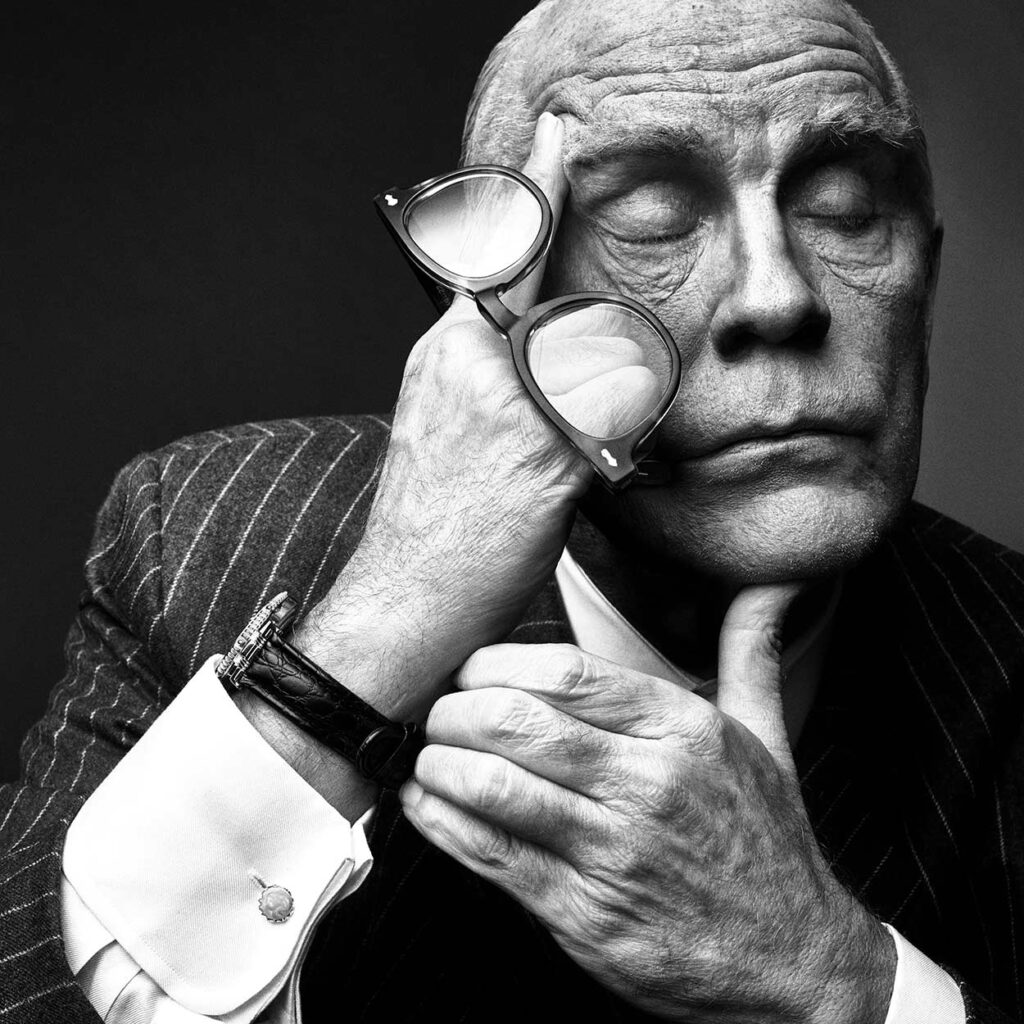
Homage to Photographic Masters, 2017
Miller’s series “Malkovich, Malkovich, Malkovich: Homage to Photographic Masters” exemplifies his mastery of artificial illumination and his encyclopedic knowledge of the history of photography.
The self-taught photographer remembers a defining moment at age 16 when he encountered the work of iconic portraitist Irving Penn. “His dramatic images of Pablo Picasso and French actress and writer Colette were powerful and mysterious. I knew right then and there that I wanted to be a photographer.”
Miller contemplated how he might be able to say thank you not only to Penn but the other photographers, past and present, who have inspired him. During two marathon multi-day shoots in 2014 and 2017, he re-created 62 historical photographs with famed actor John Malkovich channeling the original subjects’ personalities. For nearly two years prior to the first session, Miller and his team – assistants, a stylist, a hair and makeup person, props and prosthetics people—did their homework. They studied the original photographs reproduced from Miller’s vast book collection, as well as online and in galleries.
Miller would enlarge the original image on his computer so big that the eye of the subject would fill the screen. He could then study the eyeball for the details of the type of lights that were used by the master of the iconic shot. No detail was to be left uncovered for the series to be taken seriously. “I come from the old school way of doing my work, and that’s to do your homework, do it right in camera, and not leave it up to fixing things in postproduction.
I truly wanted to create the work the same way the master that came before I created his or her work.
We did some postproduction, but I use it much like we used the darkroom.”
In the makeup chair, Malkovich would begin his transformation. He was no longer John Malkovich but Marilyn Monroe, Winston Churchill, Che Guevara, Alfred Hitchcock, Ernest Hemingway, Abraham Lincoln, a Migrant Mother, and whoever else he was morphing into. Miller felt his idea would succeed if it brought great interest not only to the project but began a resurgence in the interest in the original iconic photographs.
He succeeded in both. The triumphant results made their way into book form and a touring exhibition.
They are at once a lesson about perseverance and a visual primer on photographic portrait history. The success of the first shoot for the series led to Miller being named International Photographer of the Year at the Lucie Awards in 2015.
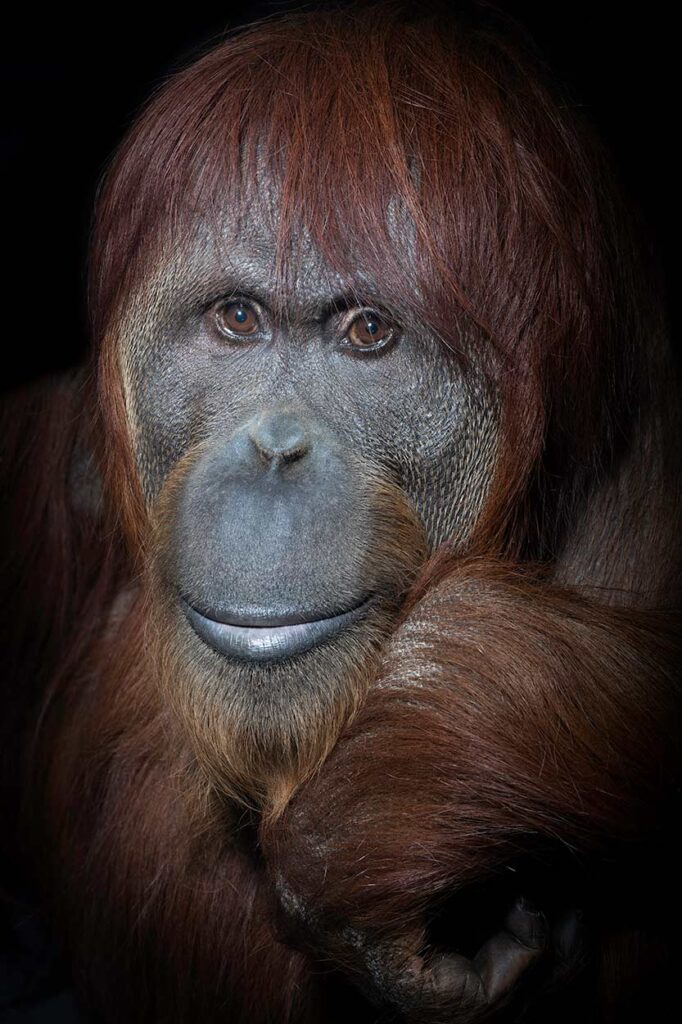
International Orangutan Center.
Indianapolis, USA 2018
Mark Edward Harris © All rights reserved.
Harris‘s knowledge of photographic history, including its practitioners, is also encyclopedic. His first book, published in 1998, “Faces of the Twentieth Century: Master Photographers and Their Work” (French Edition: Images du XXieme siècle, German Edition: Gesichter des zwanzigsten Jahrhunderts), includes portraits and interviews with and the photographs of Alfred Eisenstaedt, Manuel Alvarez Bravo, Carl Mydans, Sebastiao Salgado, Annie Leibovitz, Gordon Parks, Eve Arnold, Helmut Newton, Herb Ritts, Eikoh Hosoe, Elliott Erwitt, Joe Rosenthal, Peter Lindbergh, Mary Ellen Mark, Edouard Boubat, Andreas Feininger, Jeanloup Sieff, Horace Bristol, and Marc Riboud.
Harris is able to navigate successfully through many different genres of photography fields, from commercial to fine art and documentary, feeling that “at their very essence, they are all the same.
It’s about freezing a moment in time.
“It’s about freezing a moment in time. The magic surrounding the camera’s ability to do that is what first attracted me to the medium of photography, and that feeling has never, and will never, leave me. Some projects, such as photographing in North Korea or covering the tsunami in Japan, or the war in Ukraine, need to be done in a photojournalistic way.”
– Mark Edward Harris
are on their way to a gold medal at the Tokyo
Olympics in the women’s synchronized 3-meter
springboard on July 25, 2021.
Mark Edward Harris © All rights reserved.
The magic surrounding the camera’s ability to do that is what first attracted me to the medium of photography, and that feeling has never, and will never, leave me. Some projects, such as photographing in North Korea or covering the tsunami in Japan, or the war in Ukraine, need to be done in a photojournalistic way. My series on Japanese hot springs is a combination of a fine art and documentary approach. My orangutan portrait series is a combination of very controlled and lit portraiture and reportage.”
If Harris had to pick only one approach, the answer is clear.
“The photo essay, telling a story through a series of images, is a powerful tool to portray any subject matter we find of interest. One of my biggest influences is W. Eugene Smith, perhaps the greatest photo essayist of all time. In workshops, we analyze how he told a visual story in his series, Spanish Village, Country Doctor, and Minamata.
If a picture is worth a thousand words, a photo essay is exponentially more valuable.” He, like Smith, engages with their subjects. “I’m not hiding a distance away with a long lens trying to “sneak” a shot.
If I’m in the middle of a village in India, everyone knows I’m there.
It seems like it is actually rude to take that approach. It’s better to engage with people. A smile in any language is understood.”
While Harris wears many photographic “hats,” he stresses in workshops that it is important to focus on specific subjects rather than to be too broad when producing a photo essay or a body of work.
“My The Way of the Japanese Bath” book might be a good example of that rather than trying to do something like, “This is Japan.” Black and white worked well to convey the surreal feeling of the bathing experience.
I started off using a Nikon FM2 loaded with Tri-x or T-Max 3200, or Ilford 3200. Now I’m using digital and converting the RAW files to black and white. Other subjects, such as my work in North Korea, Iran, Iraq, wartime Ukraine, Borneo, and so on, seem better suited for color because I want to convey the reality of a place rather than an artistic interpretation.”
Miller adds another important element to consider for those interested in a photography career. “I emphasize in workshops that in this crazy business of photography, relationships, and friendships are so important in determining your success, the jobs you get, the museums and galleries you show in, and where your collection will end up. First of all, of course, is producing a great body of work with a disciplined eye, something that Mark and I work very hard to cultivate in our workshop participants.”
DISCOVER MORE:
SANDRO MILLER
Website: sandrofilm.com
Instagram: @sandro_film
MARK EDWARD HARRIS
Website: markedwardharris.com
Instagram: @markedwardharrisphoto

